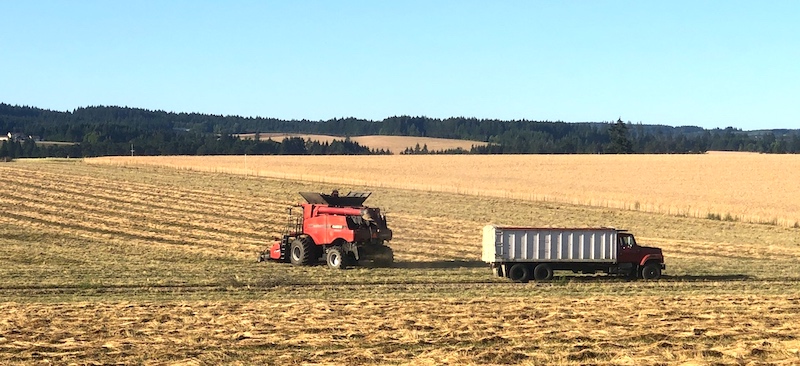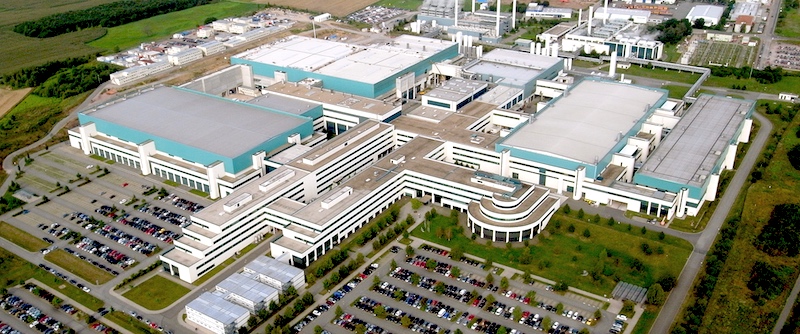
Legislative Report: What's on the Table in the 2025 Session
My very first legislative report from 2015 said:
"This blog is about my ongoing journey to discover the connections between what's going on in the field and what I put on my table. It took me awhile to realize part of that road makes a detour through the halls of the Capitol building in Salem. In other words, the decisions that our elected officials make about agriculture in Oregon directly affect what I'm going to feed my family, whether I buy it at the farmers' market or the grocery store."
The report you're reading now, almost ten years to the day since that first one, has brought me to the opening of the 2025 session of the Oregon legislature, with several bills that will affect whether we will continue to have access to functioning farmers markets and food hubs, or be able to put locally raised meats on our tables or whether farmers will have access to water for their crops, along with many other critical issues to keep Oregon's food system functioning. Here are the bills I'll be following this session with easy actions you can take:
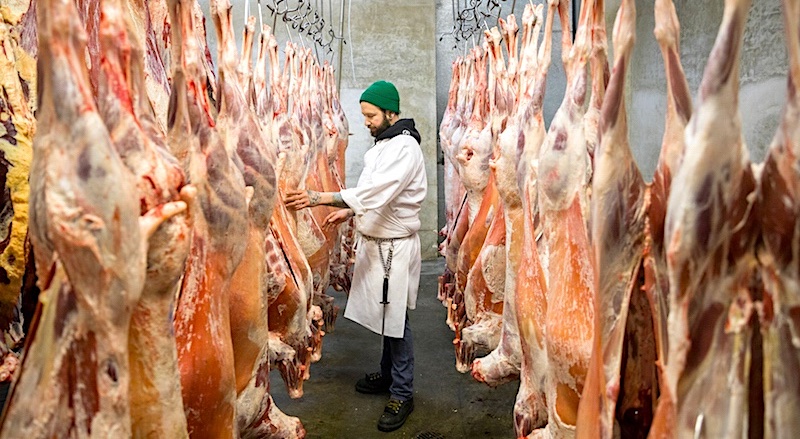
Funding a State Meat Inspection Program
Until 2021, in order to sell individual cuts of meat, farmers in Oregon had to have access to a federally certified United States Department of Agriculture (USDA) inspected facility. Oregon only has 13 of these facilities spread across the state, which has created situations where farmers need to get processing appointments almost a year in advance, and in many cases drive hundreds of miles to bring their animals to slaughter.
The cost of establishing new USDA facilities is prohibitive for any but the largest industrial producers, so a State Meat Inspection Program was developed by the Oregon Department of Agriculture (ODA) in 2021, but funding was not provided to hire staff to run the program. The bill before the legislature, HB 2164, would appropriate funding at the ODA to hire staff and manage facilities that are ready to come online shortly and are desperately needed by Oregon's small and pasture-based farmers and ranchers. (Additional details here.)
ACTION NEEDED: Sign your name to this petition urging your legislator to support this bill.
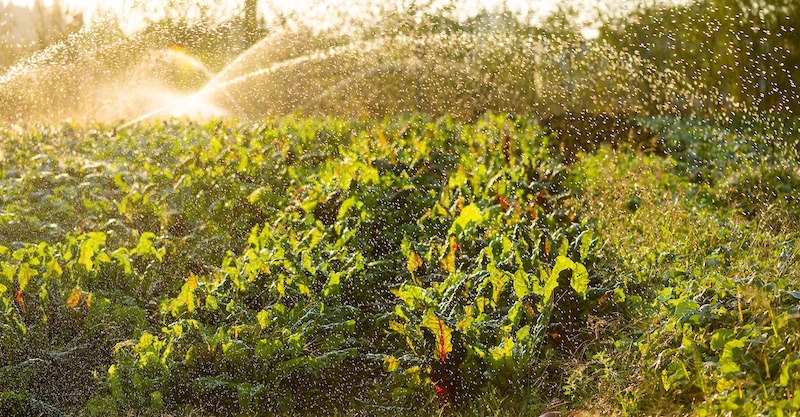 Small Farm Water Access
Small Farm Water Access
Since 1955, it has been required to have a water right to plant and grow any crops for sale in Oregon. "Domestic exempt wells"—a well drilled in order to serve a home, and not associated with a water right for irrigation—are not legal sources of water to irrigate commercial agriculture. This means that farmers cannot sell crops commercially that are irrigated with water from these wells.
A bill to allow farmers to sell crops that have been produced with domestic exempt well water, SB 76 and HB 3372—for the moment these are placeholders to fine tune language and clarify which chamber will bring it forward—essentially says that if you can legally grow vegetables, fruits or flowers for your family using a domestic well, you should be allowed to sell those products to your community, while at the same time exercising ethical, reasonable limits on use. (Additional details here.)
ACTION NEEDED: Sign your name to this petition urging your legislator to support this bill.
Additional Food System Bills
- Holding polluters accountable (SB 747). Requires persons with ownership interests in at least 200 acres of irrigated land used for agriculture to annually report information about fertilizer application to the State Department of Agriculture. Authorizes the ODA and DEQ to hold them accountable for violations.
- Renewal of Disaster Resilience Grants for Food Producers (HB 2979). Funding supports small-scale farmers, ranchers, farmers' markets and food hubs.
- Increased Funding for OSU College of Veterinary Medicine (HB 2167). Addresses the severe shortage of veterinarians in rural Oregon, supports ongoing veterinary education, and enhances the state's capacity to combat significant health threats to animals and humans.
- Assistance for Households Reliant on Septic Systems (HB 2168). Instructs the Oregon State University Extension Service to establish a program for providing assistance to households that rely on wells for drinking water or on septic systems for wastewater treatment.
- Support for Oregon Agricultural Heritage Program (HB 3131). This measure appropriates $17.3 million for the Oregon Agricultural Heritage Fund (OAHF) to help agricultural and conservation groups to protect farm and ranch land, keep it in production, and enhance its natural resource values.
- Spanish Language Pesticide Training (HB 3010). Directs Oregon State University to develop a Spanish language pesticide education program.
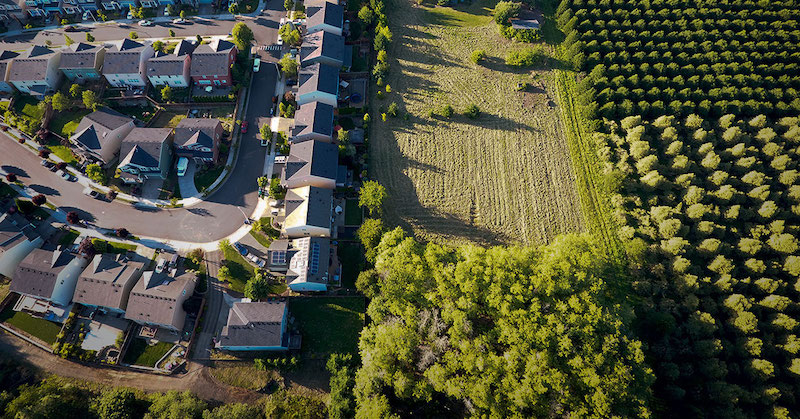 Conservation of Working Lands
Conservation of Working Lands
Loopholes in Oregon’s agricultural and forest land policies are being used to authorize high-end residential development, luxury hotels, and elite entertainment venues on land designated exclusively for agricultural and forest production.
In addition to converting our agricultural and forest land into playgrounds for the well-heeled, the mere opportunity to site such venues is driving up farm and forest land prices beyond the reach of family farmers, ranchers, and timberland managers. New and beginning operators are being priced out of the market. In addition, unchecked residential and commercial development in our farm and forest zones threatens other valuable resources protected by large blocks of agricultural and forest land, such as water and wildlife habitat.
This package of bills closes long-neglected loopholes in Oregon’s farm and forest land protection policies:
Replacement Dwelling Reform (SB 78). Stops the conversion of agricultural and forest land for luxury residential development through “replacement” dwellings.
Home Occupation Reform (SB 77). Closes the loophole that allows large-scale hospitality and entertainment facilities being approved on land designated for agricultural and timber production.
Spot Zoning Reform (SB 73). Stops the case-by-case rezoning of individual ag and forest properties to residential and industrial use outside a state-authorized planning process.
Nonresource Dwelling Reform (SB 79). Prohibits new houses that have nothing to do with agriculture or forest management from being built in critical groundwater areas, priority wildlife habitat and migration corridors, and on high‐value farmland.
ACTION NEEDED: Oregon residents can sign your name to this letter to legislators.
Thanks to Friends of Family Farmers, 1000 Friends of Oregon and Oregon Rural Action for their help in compiling this report. You can follow these organizations on social media and sign up for their newsletters to get alerts about actions you can take on these issues.
